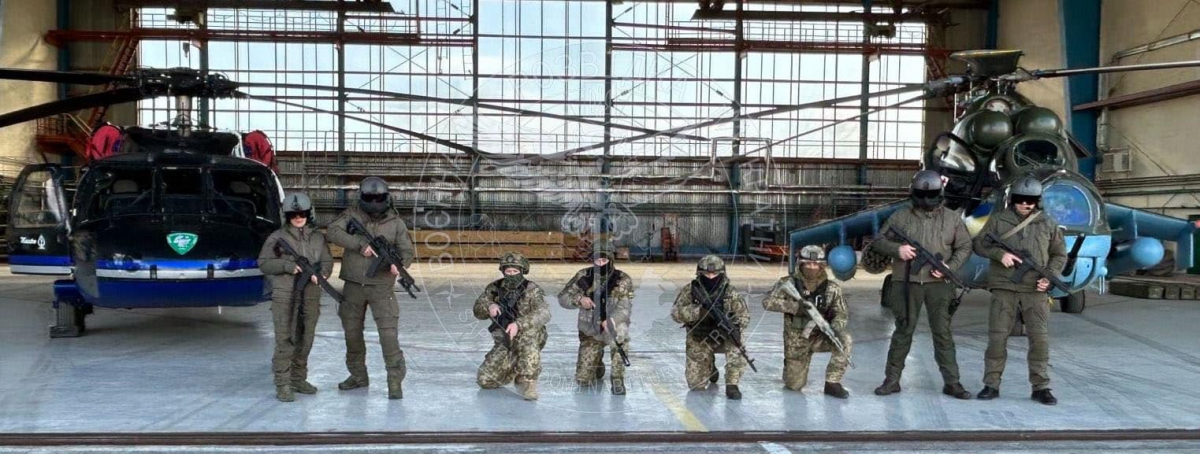A photo released by a Ukrainian intelligence service confirms that the Ukrainian Armed Forces have at least one Black Hawk transport helicopter in service.
On February 21, the Defence Intelligence of the Ministry of Defence of Ukraine (GUR) announced on Facebook the return of specialized reconnaissance operators. In the background, a Mi-24 Hind is visible on the right side of the image. The news of the day is on the other side: on the left and in the background, a UH-60A Black Hawk is visible. The latter displays Ukrainian roundels: it is the very first Black Hawk in service with the Ukrainian Armed Forces!
The helicopter does not appear to be armed and does not pick up any military camouflage. Precisely, this camouflage allows with almost certainty to identify it: it would be the N60FW (n°80-23439). This one was part of the helicopter fleet of the American company Ace Aeronautics, as confirmed by the black, blue and white livery but now with Ukrainian roundels and flag. It is a former helicopter that was used in the US Army, stored and then bought by Ace Aeronautics. The attached video shows just such a helicopter at Heli-Expo 2022.
To date, no Black Hawks had been delivered to Ukraine. Helicopter deliveries had been limited to former Soviet Mi-2, Mi-8/17, Ka-32 transport and Mi-24 Hind attack helicopters. The British delivery of three Westland Sea Kings seemed to be the exception. Specifically, the details of its delivery are unknown :
- Offered by ACE
- Bought directly by Ukraine
- Bought through an intermediary in order to deliver it to Ukraine.
Ace Aeronautics specializes in the development of cockpits for transport aircraft as well as other improvements. The Black Hawk, now Ukrainian, had been used precisely to confirm the use of an optronic ball under the nose. It is also capable of servicing UH-60As purchased from US Army stocks in order to sell them.
As a reminder, the UH-60A Black Hawk has a crew of up to 3 people and a capacity to carry 11 military personnel. Its cruising speed is 140 knots (or 259 km/h).




Découvrez cet article sur Air&Cosmos

